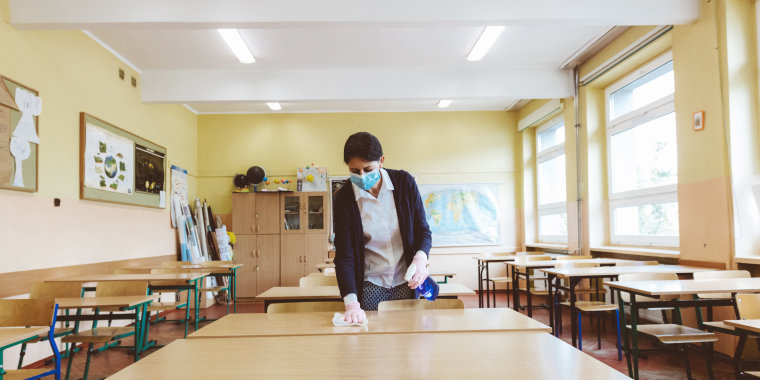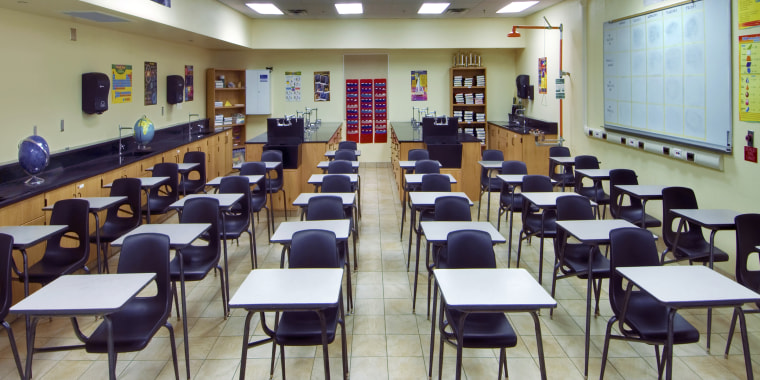As the school year approaches and the coronavirus pandemic continues, more parents are anxious to find out exactly how schools in their districts will open.
Some data and studies do point out that a regular school reopening could be done safely, but most of that data comes from countries with a substantially lower rate of virus transmission than what is currently present in the United States.
A panel of experts from Johns Hopkins University Bloomberg School of Public Health discussed Thursday why opening school in the U.S. is such a different proposition than opening them in countries like Denmark or Germany.
"We have fairly good data that it is possible to reopen schools safely," said Jennifer Nuzzo, PhD, a senior scholar at the Johns Hopkins Center for Health Security. "... We continue to believe that children are at lower risk from this virus than other age groups. And we also have, I think, fairly reassuring data from other countries that have gone about the work of reopening schools. So Austria, Denmark, Germany, Norway, many other countries have done so. And looking at their experiences has so far been reassuring."
However, Nuzzo said the "key" of those reopenings was the general safety of the community, not just the school.
"What we know is that all of these countries ... have taken measures to maximize safety in school settings," Nuzzo explained. "They have all started from a place of having low transmission and low levels of illness in the surrounding communities. So that's an important place to start with. Each of these countries started from having their epidemics under control."
"In communities where the case numbers are rapidly increasing, it may not be possible to safely reopen schools until disease transmission is lowered," Nuzzo continued. "(I) can't stress that enough, because that's been a lot of conversation as of late. But in communities where disease rates are declining or stable, it may be possible to think about reopening schools, provided schools are able to put in place measure to reduce the likelihood of transmission."
Anita Cicero, JD, the deputy director of the Center for Health Security, said later in the briefing that many countries that are reopening schools are showing "one or fewer cases (of COVID-19) per 100,000 people."
"In contrast, there are U.S. counties now reporting 60 cases per 100,000. Others have 80 cases or more per 100,000 in the county," she said. "We really need to be doing all we can to drive those numbers down so that we can return children to school buildings ... This should be a national priority, and it's immeasurably more important than re-opening bars and restaurants."
Nuzzo highlighted the situation in Israel, where schools did reopen amid lifted safety precautions, which led to an increase in transmission.
"Increasing transmission in the surrounding community because of large public gatherings and then lifting precautions in the schools have ultimately contributed to the numbers of infections within schools, and led Israel to close schools again," Nuzzo said. "I think what this really underscores is the need for schools to adopt safety precautions to reduce the risk of transmission in these settings."

Currently, there is no data or clear answer on what an acceptable rate of community transmission would be for schools to reopen.
"It's partially tied not just to the level of infections that are occurring, but also the abilities of the community to handle it," said Nuzzo. "I look more at trends rather than numbers, and if the trends are headed upward, that's just worrisome because it suggests that something about control efforts is not working. So I would first start with a consideration of our disease trends stable or hopefully declining. And if not, that it's going to be very challenging."
"If there's sufficient capacity to test and to isolate anybody who's sick and to contact tracing, that's obviously a much more reassuring situation than in communities where those resources are constrained," she continued.
Dr. Josh Sharfstein, Vice Dean for Public Health Practice and Community Engagement at the Bloomberg School of Public Health, added that "rapidly rising rates of infection" are "not good" since the virus can "spread so quickly."
"Part of the challenge of this is that you have to look at a number of different channels at once," he said. "It's not like a computer program that you can just set up and then push a button and then you know exactly the right thing to do. But I think looking at all of those different things, understanding what the basic benchmarks are ... I think that it is possible to put together some basic guidelines. And I think as we see what happens this fall, that those will start to gel even further."


